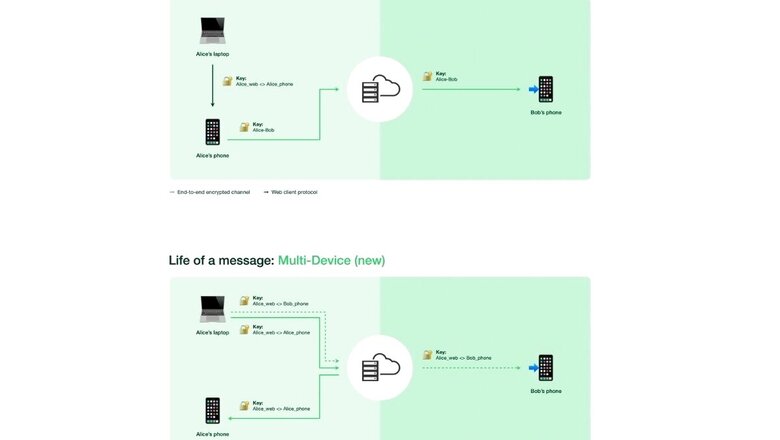
views
The much-awaited WhatsApp multi-device support arrives soon, and indications are it could be sooner rather than later as the limited public beta tests are underway. Now, WhatsApp is explaining how things will work behind the scenes for multi-device support to work, particularly with regards to security. It is confirmed that WhatsApp will allow you to have your phone’s WhatsApp account on up to four other devices and will not need your phone’s connectivity to be active for them to work. The Facebook-owned WhatsApp insists that all devices will get the same level of end-to-end encryption and security as the primary phone with WhatsApp set up.
WhatsApp head Will Cathcart says that there was a rethink of the architecture and new systems were designed to enable standalone multi-device experience while maintaining end-to-end encryption. Till now, the phone was the primary source device for all messages and calls, which were then made available on companion devices and apps including WhatsApp Web, macOS, Windows and Facebook’s Portal smart displays. “Prior to the introduction of multi-device, everyone on WhatsApp was identified by a single identity key from which all encrypted communication keys were derived. With multi-device, each device now has its own identity key,” says Cathcart. The WhatsApp server will maintain a map of each person’s account and the device identities linked with it.
The multi-device support is being tested with a small group of users at this time, who are part of the beta program. Earlier, the user’s phone managed the identity key, but now, up to four non-smartphone companion devices can connect with WhatsApp servers independent of each other, with each having their unique identity keys and same end-to-end encryption levels. This means that even if your phone doesn’t have battery or there is inconsistent data connectivity, you’ll still be able to send and receive messages with WhatsApp apps on your laptop, for instance. Message history will also be synced across all linked devices and apps.
“When a companion device is linked, the primary device encrypts a bundle of the messages from recent chats and transfers them to the newly linked device. The key to this encrypted message history blob is delivered to the newly linked device via an end-to-end encrypted message. After the companion device downloads, decrypts, unpacks, and stores the messages securely, the keys are deleted,” says Cathcart. From there on, the companion device will access older messages from its own local database, and not have to refer back to the primary smartphone every time.
Read all the Latest News, Breaking News and Coronavirus News here.
















Comments
0 comment